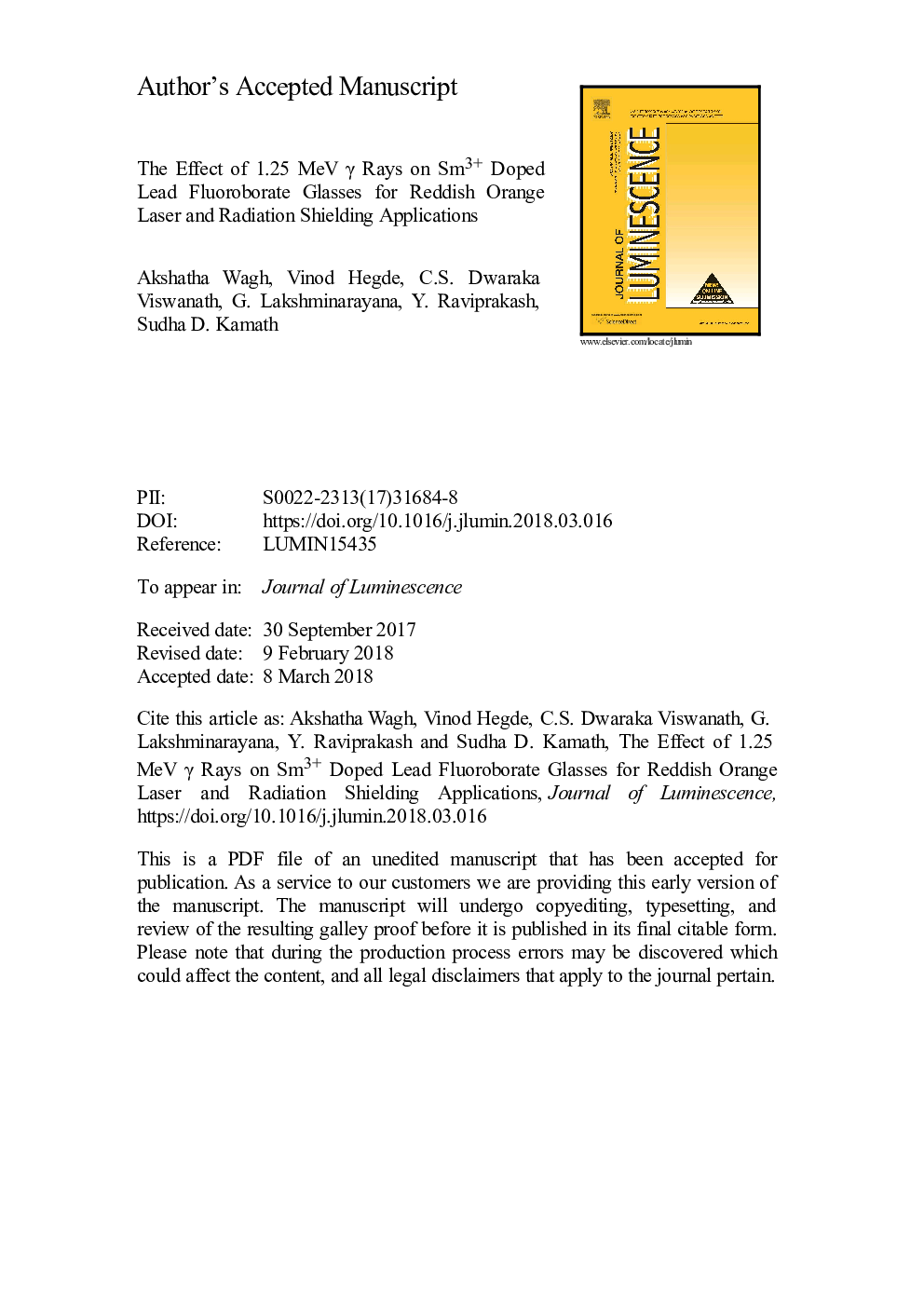| Article ID | Journal | Published Year | Pages | File Type |
|---|---|---|---|---|
| 7840026 | Journal of Luminescence | 2018 | 59 Pages |
Abstract
This research paper accentuates on the reddish orange light generation from Sm3+ ions doped lead fluoroborate glasses and the changes in the structural, optical, thermal, morphological and mechanical properties in the same glass samples after irradiation with gamma (γ) rays of 1.25â¯MeV energy and 150â¯kGy dose. The FTIR and the UV-VIS-NIR absorption spectra verified the generation of Non-Bridging Oxygens (NBOs) after γ irradiation. The Electron Paramagnetic Resonance (EPR) endorsed the presence of defect centers in the samples both before and after irradiation (with improved defects after irradiation). The stability (Hr) and hardness (H) of the samples improved (< 5%) post irradiation, portrayed radiation resistant nature of the present titled glasses. The quality of the color emitted by the glass samples quantitatively determined by CIE chromaticity coordinates (x- ~ 0.6, y- ~ 0.39) and correlated color temperatures (CCT- ~ 1622â¯K), together proved the reddish orange prominence of the prepared glasses, both before and after irradiation. Sm4 (1.0â¯mol% Sm2O3 doped lead fluoroborate) glass sample showed better quality results compared to other samples signifying their suitability in laser materials and photonic applications, extensively due to the prominent G5/24âH7/26 emission peak. Lifetime decay was schematically analyzed for Sm4 sample, signifying dipole-dipole interactions. The study of the glass samples pre/post gamma irradiation suggested the formation of color centers, and its candidature for reddish orange laser applications with the significant stability.
Keywords
Related Topics
Physical Sciences and Engineering
Chemistry
Physical and Theoretical Chemistry
Authors
Akshatha Wagh, Vinod Hegde, C.S. Dwaraka Viswanath, G. Lakshminarayana, Y. Raviprakash, Sudha D. Kamath,
